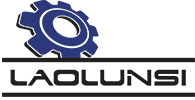"Machining" surface treatment
The manufacturing accuracy of fine machining is high
machining surface treatment:
1. Chemical polishing: a process method in which the surface of the workpiece undergoes chemical or electrochemical changes under the action of abrasives and chemical solvents, so as to achieve the purpose;
2. Cationization: A method of coating an oxide film containing metal cations on the surface of a workpiece and oxidizing it into a non-ferrous metal layer under appropriate conditions. Metal anoidation processes include electrolytic oxidation, chemical oxidation and plasma oxidation.
3. Sandblasting: a process method that uses mechanical methods to produce fine sand-like roughness on the surface of the workpiece to improve its surface friction characteristics;
4. Electroplating: The process method of coating a layer of metal film on the surface of metal or alloy by chemical or electrolytic methods. Electroplating is a widely used and large-scale surface treatment technology in hardware processing.
The manufacturing accuracy of fine machining is high, and the surface of the product is smooth and clean in the process of use, that is to say, the fine machining produced by the production and processing can save a lot of machining work, and can be directly used in life. There will be many gray-black circular shallow pits on the surface of the fine machining, and the equipment fills the pits with this slag material before cleaning, which will directly affect the quality of our castings.
fine machining is the use of a cast iron material, its comprehensive properties are close to steel, it is based on its good performance, has been successfully used to cast some parts with complex stress, strength, toughness and requirements. Ductile iron has developed into a widely used cast iron material second only to gray cast iron. so-called
Previous
Recommended Blogs
The Future of Manufacturing: Groundbreaking Innovations in Gear Machining Centers
The Future of Manufacturing: Groundbreaking Innovations in Gear Machining Centers Table of Contents 1. Introduction to Gear Machining Centers 2. The Importance of Gear Machining in Modern Manufacturing 3. Technological Advancements Shaping Gear Machining Centers 4. The Role of Automation and Robotics in Gear Machining 5. Precision Engineering in Gear Machining Centers 6. Sustainabilit
Understanding Hypoid Gear Cutting Machines: Innovations in Gear Manufacturing
--- Hypoid gear cutting machines play a vital role in the manufacturing and machining of hypoid gears, which are widely used in various applications due to their unique properties. These machines are specifically designed to produce gears that feature a non-parallel shaft arrangement, allowing for efficient transmission of power at different angles. Understanding the mechanics and benefits of hypo
A Comprehensive Exploration of External Gear Cutting Machine Mechanics
A Comprehensive Exploration of External Gear Cutting Machine Mechanics Table of Contents 1. Introduction to External Gear Cutting Machines 2. Importance of External Gear Cutting in Manufacturing 3. The Mechanics Behind External Gear Cutting 4. Types of External Gear Cutting Machines 5. Key Components of External Gear Cutting Machines 6. The Gear Cutting Process: Step-by-St







